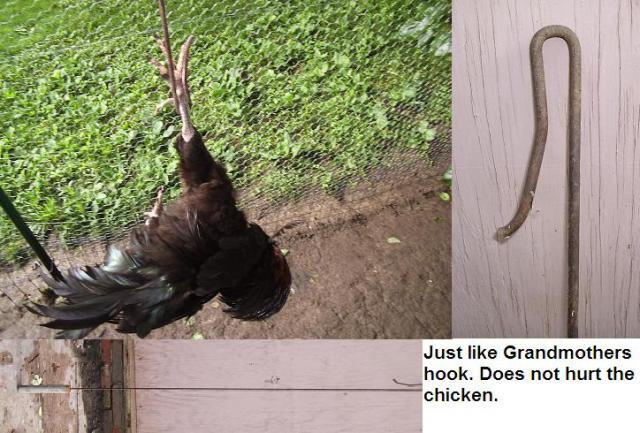
Wing-banding new chicks is the most common and efficient way of tagging and keeping tack of newborn livestock. There was a multitude of different types of wing-bands from bar-coded ones to curl-locking wing-bands, but the ones these farms used were the basic numbered bands with a piercing point that had a fold over tab to secure the band, as well as expose the number.
Chicks are usually wing-banded within the first 2-4 days after being born. The longer a poultry farmer waits, the more pain the chicken will feel and remember. The first thing I noticed when Wing-banding chicks was how to hold it. The newborn chicks are tiny, so spreading their wings out and holding them firmly, but gently, is the plan of action one needs to take to properly wing-band them. After spreading the wing out that is to be banded, puncturing the flap of skin is quick, easy, and relatively harmless to the chick. The chicks may chirp a bit, but Chet explains that this is not from the wing-banding; they simply are away from the rest of the group, and this causes them to make noise. The band itself does not hurt the chick as the band is attached at a web of fibers that have little to no nerves there. After piercing the web of skin, the next and final step is to bend the tab over the pointy-end. It is important to make sure that the numbers are not covered by the flap otherwise that defeats the purpose of the band!
Other ways to identify newborn poultry livestock are by leg-banding or spur-shaving, however, both are impractical. Poultry are very curious creatures so if a farmer were to leg-band their birds, it is most likely that the bird will pick at it until it comes off. More so, as the chickens grow, they will also outgrow the leg bands. This means that they would need to be replaced with age which means more time and more money. Also, spur-shaving is a common way to identify newborns, but this is time-consuming and is definitely more painful than a wing-band.
After wing-banding, I was led into another unit of the facility to be taught how to catch the birds, specifically White leghorns. Using a tool called the fowl-catcher, I successfully caught many birds easily. What this tool does is it catches a chicken by its leg and because their legs bend forward (and not backwards like ours) their leg gets stuck. From there, I lifted it up and grabbed it by both of its legs. I was then told that the proper way to hold a chicken is by splitting my fingers into a live-long-and-prosper sign, then sliding that along the chicken's stomach. This allowed me to hold both of the chicken's feet as well as support its entire weight in my hand.

When catching the white leghorns Chet explained that these birds are bigger, so they are less flighty and more calm in the presence of humans. The white leghorn is only one of hundreds of breeds in existence, and one of many that lays white eggs and has pink ears/skin. Also, the white leghorn is predominantly used as layer chickens as opposed to a meat producing broiler. When trying to catch the white Plymouth rocks Chet told us that these birds are smaller, so they are more agile. This meant when trying to cull them (catch them with a cull hook) we would have to be quicker and more accurate when trying to pick them up as they will react faster, try to escape, and will not wait around for you to catch them. The Plymouth Rock chicken is a dual-purpose chicken that grows well to produce both eggs and meat. Unlike the White Leghorn, Plymouth Rocks have yellow ears/skin and produce brown eggs. The other two bird species that were discussed in little detail were the Cross-Ex (CX) birds and the New Hampshire (NH) birds; both lay brown eggs. The difference in the color of egg produced is unknown, but there are many ways to tell what color egg a bird will produce just by looking at its physical characteristics.
| White Leghorn |
At the end of the lesson, we were taken to the cage-house where Chet discussed the experiments and tests the farm was running. The test that Chet went into great detail about regarded Ovarian Cancer. The chicken is the model for Ovarian Cancer as a chicken cycles once a day (because they lay one egg a day, until they molt). He discussed that they have finally found a marker in the blood that can detect whether or not a woman will expect to have a form ovarian cancer, and what treatments she should begin to prevent full-on ovarian cancer. Lastly, flax seed plays an enormous role in the prevention of Ovarian cancer. A study conducted at these farms showed that out of 20 birds given flax seed in their diet, 19 of the birds had no signs of ovarian cancer. Of the 20 birds not given flax seed in their diet, over 90% of them developed ovarian cancer. And as Chet says, although he does not have Ovaries, he consumes flax seed every day, just in case.

No comments:
Post a Comment